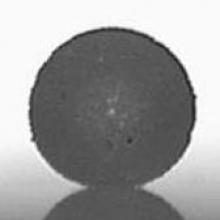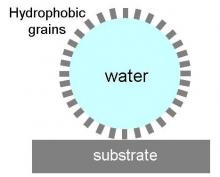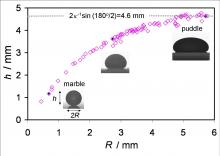Encapsulated water: Liquid marbles
Hydrophobic is usually taken to mean water-fearing, but hydrophobic grains stick to the surface of water. If the grains forming a hydrophobic surface are loose, rather than fixed, a liquid marble can be formed instead of a superhydrophobic surface. A droplet of water rolling across the surface becomes encapsulated by the grains. This liquid marble is completely mobile and rolls freely on solid (and water) surfaces (click here for a video). Professor Quéré and co-workers have shown that small liquid marbles roll down hill faster than larger ones (click here for a video), which is the opposite of what would be expected for solid marbles. Liquid marbles occur naturally in nature and are used by galling aphids as waste disposal system for the honeydew they secrete - read more about "How Aphids Lose Their Marbles" here.
Publication
![]()
Electrowetting of non-wetting liquids and liquid marbles,
Langmuir 23 (2) (2007) 918-924.
Via ACS server
![]()
Liquid Marbles: Principles and applications,
Soft Matter 7 (12) (2011) 5473-5481. View postprint pdf




